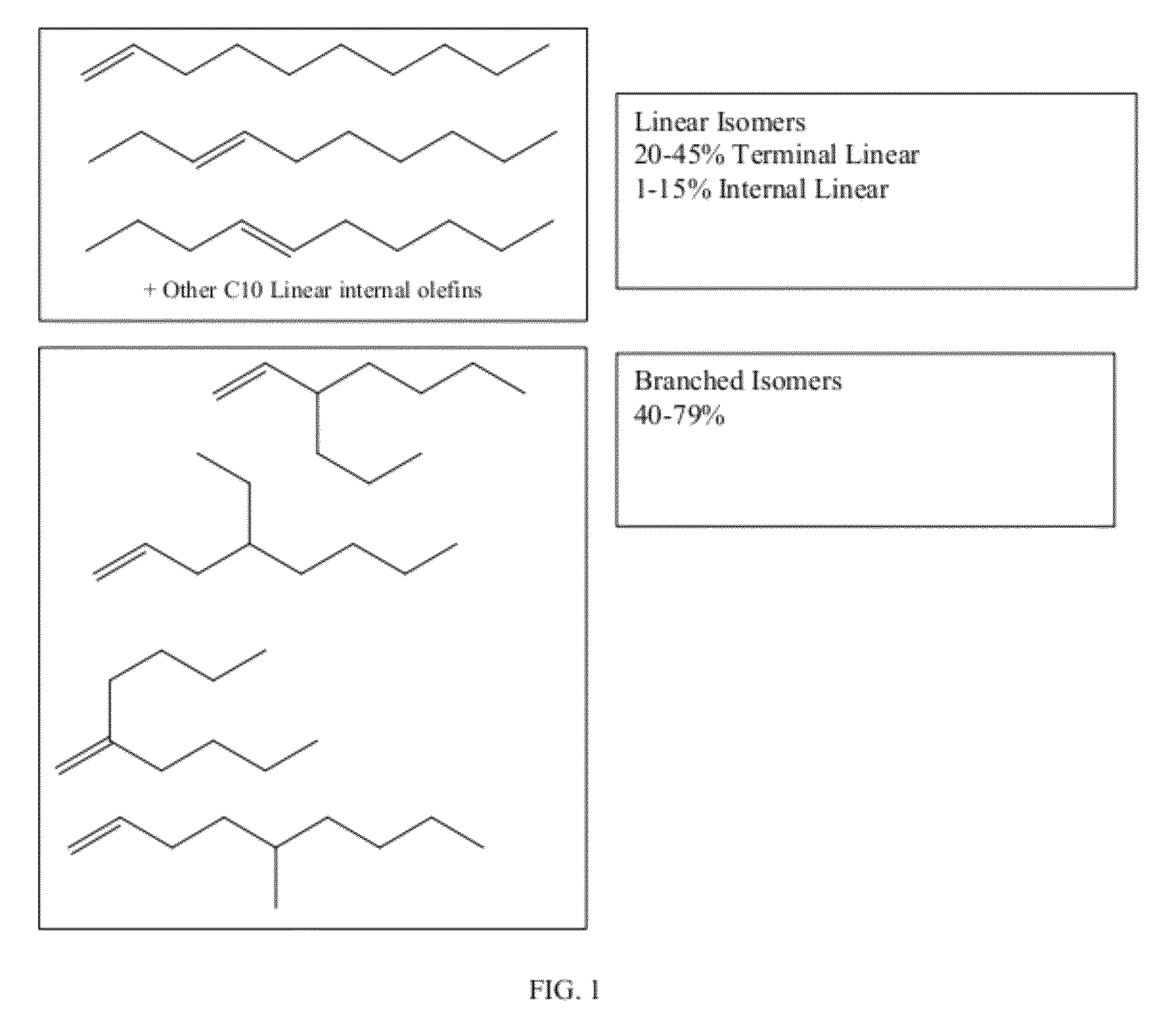Functionalized long-chain olefin mixtures and uses therefor
- Summary
- Abstract
- Description
- Claims
- Application Information
AI Technical Summary
Benefits of technology
Problems solved by technology
Method used
Image
Examples
example 1
[0045]A tetramerization of ethylene is carried out using a dimethylpropyIPNP (5 μmol) ligand together with Cr(acac)3 (5 μmol) as the catalyst system, 480 equivalents of MMAO-3A ( (multi-methyl aluminum oxide, a catalyst activator commonly used in polyolefin chemistry), methylcyclohexane as solvent, and reaction conditions of 45 bar pressure and 60° C. After rectification, a C10-C14 by-product fraction is produced. Estimates based on an isomer analysis of this fraction, using gas chromatography-mass spectroscopy (GC-MS), are shown in Table 1. The composition of the C12 fraction is extrapolated from the C10 and C14 estimates, as the isomer analysis is considered to be less than satisfactory in this region.
[0046]
TABLE 1C10C12C14Approximate split22%48%30%(mass fraction ofC10-C14 fraction)Mass % identified90nd**95Mass % olefin989999Min. mass %727272linear orbranched, non-vinylidene α-olefin*Min. mass %6352 to 6352linear or methyl-branched non-vinylidene olefin*Min. mass %5350 to 5451line...
example 2
Isolation of C10-C14 Olefin Mixture
[0048]An olefin mixture (supplied by Sasol Technology, from its proprietary ethylene tetramerization process which includes using a chromium-based catalyst) containing C8-C32 olefins, is batch-distilled using a small scale glass distillation setup with 4-inch Vigreux column at 0.5-1.0 torr vacuum. The fraction that boils between about 60° C. and about 95° C. is collected and found to contain a combination of olefins in the C10-C14 range.
Hydroformylation of C10-C14 Olefin Mixture
[0049]Catalyst solution preparations and solution / olefins transfers are made under a nitrogen atmosphere. A catalyst solution is prepared from about 0.1894 grams Rh(CO)2(acetylacetate), 19 milliliters of a solution of 21 percent by weight of dicyclohexylphenylphosphine-monosulfonate-sodium salt in N-methyl-pyrrolidinone (NMP), and 60 milliliters of NMP. The catalyst solution and about 123.5 grams of the C10-C14 olefin mixture is charged to a 500 milliliter magnetically stirr...
PUM
| Property | Measurement | Unit |
|---|---|---|
| temperature | aaaaa | aaaaa |
| pressure | aaaaa | aaaaa |
| temperature | aaaaa | aaaaa |
Abstract
Description
Claims
Application Information
 Login to View More
Login to View More - R&D
- Intellectual Property
- Life Sciences
- Materials
- Tech Scout
- Unparalleled Data Quality
- Higher Quality Content
- 60% Fewer Hallucinations
Browse by: Latest US Patents, China's latest patents, Technical Efficacy Thesaurus, Application Domain, Technology Topic, Popular Technical Reports.
© 2025 PatSnap. All rights reserved.Legal|Privacy policy|Modern Slavery Act Transparency Statement|Sitemap|About US| Contact US: help@patsnap.com



